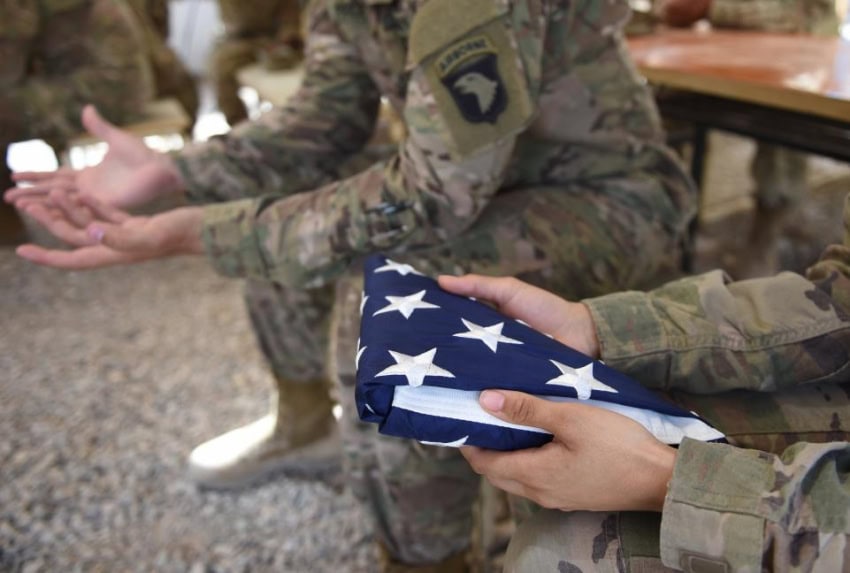The US President Donald Trump is a highly controversial political figure with his known temperamental problems. He knows less about the intricacies of geostrategic politics and more about the real-estate business, the very income of which helped him to pump up billions of dollars into electioneering that brought him to power early this year. He is characterized as an impulsive and unpredictable by virtue of his uncanny psychic makeup. After being taunted about his psychic disorder, Trump lately has been engaged to provide cosmetics and colours to his unpredictable nature. He boasts-off of being unpredictable as a canny quality of his conduct and rather counts it as his strength which he publically says would keep his enemies and rival guessing as to what he intends to do about them.
Trump may be right in his own wisdom but only if his adversaries suspend their common sense. So far there are no signs they would do so at least in the region surrounding Afghanistan after he unfolded so-called new policy which by looks of it, however, may appear to be unpredictable for some but not for everyone.
An unwinnable tactical US gamble
Being conscious of limited geostrategic options on the table to deal with a stubborn insurgency, the US President gave in to the policy recommendations of Pentagon which has now engaged itself into an unwinnable geostrategic gamble over an already lost Afghan war. And here is how it begins to unfold now.
The US is adding nearly 4000 troops to its existing strength of 11000 soldiers stationed in Afghanistan. With 15000 troops, mostly in their capacities as advisors and trainers, now Americans would try to win a war which they virtually lost with peak numerical strength of well over 100,000 soldiers in Afghanistan just a few years ago. Another component of the policy is to keep the timeframe of withdrawal of US troops as an open ended option. This, Trump believes would turn out to be as a deterrence to keep his opponents guessing, something which he considers would be the strength of his new policy to contain 16 years long ever growing Afghan Taliban insurgency. Contagious part of this policy is to single out Pakistan for much of the mess the US led NATO forces have been through over the years in Afghanistan. Therefore, he hurled alluded threats to nuclear armed Pakistan to face military action on the alleged hideout of Afghan Taliban in bordering region with Afghanistan and beyond. It was a gimmick from a President of an ageing super power to threaten his ally which Washington now perceives as an adversary.
Pentagon is gambling through a President who has the least understanding of geostrategic implications of the hard hitting words he chose to threaten his ally. Islamabad behind the scene also considers Washington to be its adversary given its overt long term economic and geo-strategic alliance with country’s arch rival India.
Deceptive geographical camouflage
The geography itself has been an enemy of invaders over the course of centuries and it is inherently in defiance mode to separate the region on a territorial basis.
There are over 2,500 kilometres long zigzag, porous and mountainous borders between Pakistan and Afghanistan. The border is least fenced and routinely people from both sides move back and forth. At times, it becomes extremely difficult to make a distinction which part of the border region belongs to which country. If the home of a family is located in Pakistan, the courtyard of the home may be in Afghanistan. If the home is in Afghanistan, the children would come to the Pakistani side of the border to study in the school. On both sides of the borders are Pukhtoon ethnic tribes who by their facial features are similar in their outlook, their language is same and more importantly their inbuilt ideology of Islam is same, therefore, it becomes extremely difficult to make a distinction as to who among them belongs to Afghanistan and Pakistan.
At least 40,000 people from both sides of the border travel across the border daily through check posts in south, southwest and northwest of Pakistan while the number of the people who routinely across the borders through informal, route is far bigger.
Strategic interests of Pakistan
The US can not compel a nuclear armed Pakistan to compromise its geostrategic interests at a time when Americans have clearly outlined its policy to give its arch rival India a dominant role in Afghanistan and the region.
Pakistan military is India centric and their entire framework of geostrategic policy is centre-staged on how to contain hegemonic Indian designs in the region and create favourable conditions to resolve lingering territorial dispute over Jammu and Kashmir. India, on the other hand, has hugely invested in Afghanistan through developmental projects to multiply its political clout. Under this façade, New Delhi has setup mega espionage network in Afghanistan from where Islamabad believes it sponsors terrorism particularly in the southwest of the country. Pakistan feels being encircled from its eastern borders with India and after 9/11 from the northwestern and southwestern border with Afghanistan.
Pakistan’s compulsions to maintain links with Taliban
Pakistan obviously would not sit idle to wait for US and India to play their strategic games at the expense of its vital interests in the region. It would do all it can short of a direct confrontation with Americans and India to neutralize Indian espionage network and their backers in Afghanistan. Therefore, Pakistan’s soft corner for Afghan Taliban has been purely based on strategic greed. And not out of love for Islam which Talibans propagate for themselves to be their source of strength on the basis of which they claim to have undertaken a Jihad to re-establish an Islamic government in Afghanistan as it existed before NATO invaded their country after 9/11.
It has been an open secret even to the extent that former military dictator General Pervez Musharraf admitted that he supported Afghan Taliban to counter increasing Indian influence in Afghanistan. However, after his departure from corridors of powers, Pakistan carried out military operations in almost all tribal regions and more particularly in North Waziristan in 2011. Islamabad was under intense pressure from the US to clean up the “ headquarter of insurgency in region”. Therefore, no longer Pakistan is hosting Afghan Taliban insurgents at a scale it used to be in the past. That is why now Afghan government complains that the military operations carried out by Pakistan over the years have led militants to sneak into Afghanistan. Now no longer Afghan Taliban needs support from Pakistan as it used to be in the past.
Nonetheless, there may be some middle ranking Taliban leaders who might have camouflaged themselves in urban centres. This is not unusual given the fact that Pakistan hosts over two millions Afghan refugees who do not seek permission from the government of Pakistan while making their movements back and forth on the porous borders.
Pakistan’s influence on Afghan Taliban?
Pakistan’s official position has been “we carry influence on Afghan Taliban but we don’t control them.” Afghan Taliban and Haqqani network have been scared of Pakistan’s ISI. Many of its leaders, Taliban sources told this scribe, were killed allegedly by ISI therefore, they do not trust Pakistan anymore. Islamabad’s attempt to bring Afghan Taliban on negotiating table on the terms and conditions set by Americans, miserably failed last year. This offended Americans and they killed Mullah Akhtar Mansoor, Afghan Taliban chief last year.
Why Iran & Russian backing Afghan Taliban
Iran has played its cards smartly by hosting Afghan Taliban and Al-Qaeda leaders. Osama Bin Laden’s close family members including one of his wife remained Iranian guests for years. The fact that Mullah Mansoor was killed in US drone attack while he was entering from Iran to Pakistan, reveals a fraction of the scale of the support Afghan Talibans have been getting from Iran—- far more than Taliban used to have from Pakistan in the past.

Iran and Russia believe that Daesh is the US funded militant outfit and its growing presence in Afghanistan is designed to destabilize them. The regional countries would surely suspect the US intentions when President Donald Trump during his election campaign in 2016 blamed the then President Obama of being “ commander in chief “ of Daesh.
The surge in causalities of Afghan security forces particularly in the north of Afghanistan is primarily because of Russian support to Talibans who get all kind of weaponry from Moscow. They have emerged as an alternative force to neutralize Daesh. The regional powers are left with no option but to watch their geostrategic interests through the de facto government of Afghan Taliban, as the de jure government in Kabul lacks its writ in much of Afghanistan.
As long as the US does not address the concerns of regional powers, their intervention in Afghanistan would linger on indirectly. They share just a part of the problem. Much of the onus, however, is on the US which lacks vision on how to contain the insurgency.
Blaming regional countries for all the mess Afghanistan has been through, is nothing more than old tactics by Kabul and Washington to hide their own consistent failures to build up state institutions in Afghanistan, contain corruption and defeat insurgents with a viable geostrategic policy. And now it may be too late for the US to rectify its own repeated policy blunders which may lead it to a disgraceful exit sooner or later. However, the biggest challenges are internal factors which played a key role to aggravate destabilization and here is how.
Afghan government in tatters
The US has wasted over 115 billion dollars to sustain bitterly divisive and thoroughly corruption ridden successive governments of notorious warlords and hand-picked westernized leaders in Kabul during last over 16 years. Over 70 billion$ alone have been spent on bolstering 3,50,000 Afghan National Army. Nonetheless, the desertion rate is so alarmingly high that each year, Kabul recruits an estimated 50,000 more foot-soldiers to replace almost same numbers of troops who either join Afghan Taliban or go back to their homes. The Afghan army is infested with Taliban spies and sympathizers. Therefore, after Taliban, members of Afghan security forces which American have tirelessly tried to build as a professional force, have turned out to be their second biggest enemy after Taliban. Foreign forces have suffered infrequent attacks from Afghan security forces over the years.
As per a recent report by the office of US Inspector General for Reconstruction (SIGAR), 807 Afghan recruits were killed while 1,328 were injured alone in January and February in the current year. As many as 6,785 Afghan soldiers and police men were killed in first 10 months of 2016.
This is the tip of the iceberg of the success of Afghan Taliban and scale of failure of Americans.
The writ of US backed government of President Ashraf Ghani is largely restricted to highways with a symbolic presence in many urban centres. However, his writ of the government is there in capital Kabul which, however, itself has been the scene of frequent attacks from Taliban. President Ghani who jealously shares power with Abdullah Abdullah as Chief Executive has been engaged in a power struggle which has largely eroded the central authority of Afghan government.
Taliban as de facto Afghan government
An overwhelming majority of Afghan hate Americans who have been perceived as an occupying force since November 2001 when US led NATO forces invaded their country.
Their fellow citizens have been killed in carpet bombing and frequent air strikes. The US admitted that Afghan Taliban control at least 40 percent of Afghan territory.

However, independent reports suggest that they control between 60 to 70 percent of Afghan territory. They have their shadow government with governors appointed in most of the provinces to administrate day to day affairs and sustain insurgency against the US led foreign troops, Afghan national army and other paramilitary security forces. The Taliban have also their parallel judicial system with their appointed judges administrating the justice. It is not that uncommon to notice that armed Taliban routinely move around heavily guarded mini cantonments setup by Americans in Afghanistan.
They have a parallel government in the war torn country particularly in east, south and west of the Afghanistan. Afghan Taliban being a de facto government have been dealing with regional powers like Pakistan, Iran, Russia and China in addition to Turkey, Qatar, Saudi Arabia on how to shape up the future of Afghanistan. Taliban have their diplomatic office in Doha through which they have held talks with Americans time and again to exchange prisoners.














